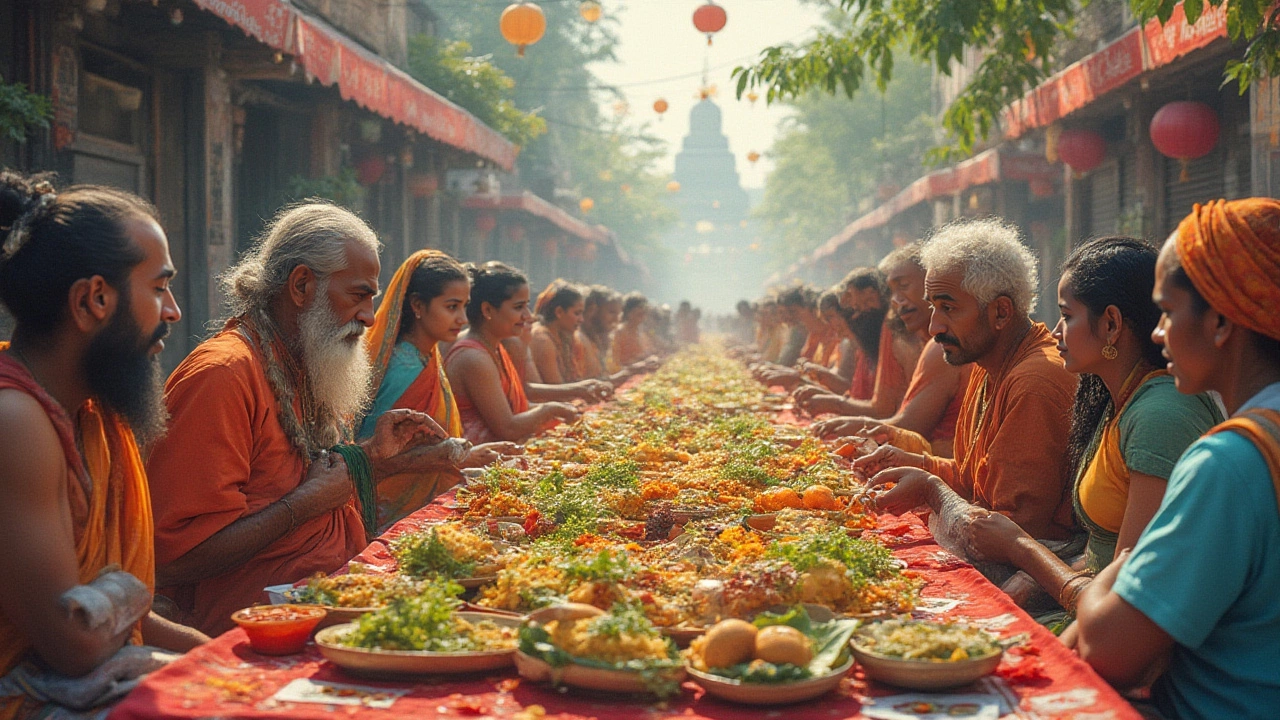Meat‑Free Beliefs in Indian Food
India is famous for its vegetarian dishes, but most people think it’s just a trend. The truth is that avoiding meat is woven into the country’s history, religion, and daily life. If you’re curious about why so many Indians prefer plant‑based meals, you’re in the right spot.
Why many Indians avoid meat
First, religion plays a big part. Hinduism, Jainism, and Buddhism all promote non‑violence toward living beings. Hindus often keep cows sacred, so beef is rarely on the table. Jains take it even further – they avoid root vegetables too, because pulling them up can kill tiny organisms. This spiritual respect for life translates into a kitchen full of lentils, beans, and fresh veggies.
Second, the climate and agriculture affect food choices. Most of India grows rice, wheat, and pulses. These crops are cheap, plentiful, and store well, making them reliable staples. When you compare price tags, a plate of dal or a vegetable curry costs far less than a meat dish, especially in rural markets.
Third, health arguments keep the meat‑free habit alive. Traditional Indian spices—turmeric, cumin, coriander—have anti‑inflammatory properties. Many families believe that a plant‑rich diet helps with digestion and keeps chronic diseases at bay. Modern research backs up some of these claims, showing lower rates of heart disease among long‑term vegetarians.
Common meat‑free myths busted
Myth #1: Vegetarian Indian food is always bland. Wrong. The spice mixes (masalas) and fresh herbs add layers of flavor that can rival any meat dish. Try a tempering of mustard seeds, curry leaves, and dried red chilies – it’s a flavor bomb.
Myth #2: You can’t get enough protein without meat. Indian cuisine offers plenty of protein sources: chickpeas, kidney beans, lentils, paneer, and soy. Pair them with whole grains like rice or roti and you have a complete protein profile.
Myth #3: All Indian sweets are unhealthy. While some desserts are syrup‑heavy, many use natural sweeteners like jaggery or dates, and nuts that add nutrients. Look for recipes that focus on fruit or millets for a lighter treat.
Our tag page pulls together articles that touch on these topics. For example, the post “Why Hindus Not Eat Pork?” explains cultural reasons behind meat avoidance, while “Healthiest Indian Food to Order” shows how you can enjoy a restaurant meal without compromising on nutrition.
If you’re thinking about exploring meat‑free Indian cooking, start simple. Cook a bowl of red lentil dal with turmeric and a handful of spinach. Serve it over brown rice and finish with a squeeze of lemon. You’ll get protein, iron, and a taste that feels both comforting and fresh.
Remember, meat‑free beliefs aren’t just a diet choice – they’re a blend of faith, tradition, economics, and health. Understanding the why helps you respect the culture and maybe even try a new favorite dish.
Ready to give it a go? Browse the articles under this tag for specific recipes, myth‑busting tips, and deeper dives into the stories behind Indian vegetarian cuisine.
Religions That Eat the Least Meat: Vegetarianism and Spiritual Beliefs Worldwide
Explore which religions avoid meat the most, with real-life examples, practical tips, and fascinating facts about faith-based plant-based diets.
